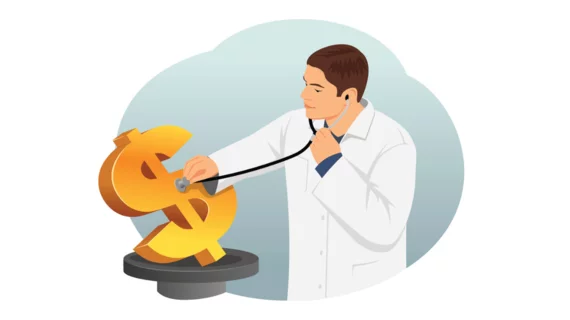Cardiologist compensation still rising, especially in invasive and interventional cardiology
Cardiologist compensation is still climbing, according to a new survey published by MedAxiom, an American College of Cardiology company. This is true for both cardiologists employed by a hospital or health system and those who still work with a private practice.
The 2024 Cardiovascular Provider Compensation and Production Survey Report includes data from 202 cardiovascular programs that represent more than 5,000 different full- and part-time physicians and advanced practice providers (APPs). While 85% of participating providers work in cardiology, 10% work in cardiac surgery and 5% work in vascular surgery. All numbers in the 59-page report represent 2023 data.
“As cardiovascular leaders are faced with challenging questions about how to best deliver care in the future, an accurate map of the current cardiovascular ecosystem is indispensable,” Jerry Blackwell, MD, MedAxiom’s president and CEO, said in a statement.
According to MedAxiom, this is the first time in the report’s history that the percentage of cardiology groups employed or leased by hospitals or health systems declined. It was a small dip, dropping from 89% to 88%, but the report’s authors emphasized this is a statistic to watch as time goes on. The remaining 12% of cardiology groups are all private practices.
“Time will tell if this is the start of a trend or just an anomaly of this year’s cohort of submitting programs,” the authors wrote.
This report also confirmed that private equity’s impact is being felt throughout cardiology. Nearly half of all private practices were technically part of a private equity portfolio in 2023.
“According to the 2023 data, the influence of private equity in cardiology is growing—as of this report, focused exclusively on private groups,” Joel Sauer, MBA, MedAxiom’s executive vice president of consulting, explained in the report. “It will be interesting to see whether private equity can make inroads into the currently hospital-employed/leased physician cohort, which is a much larger market opportunity than the private subset.”
Cardiologist compensation increased in 2023
Compensation for all cardiologists increased. For integrated cardiologists, the median total compensation per full-time cardiologist was $669,000 in 2023, up 3.7% compared to 2022. For private cardiologists, meanwhile, median compensation was $616,000 in 2023, up 4.8% compared to 2022.
Looking at other subspecialties within cardiology, invasive cardiologists took home the highest salaries in 2023 and general cardiologists and advanced heart failure physicians earned the lowest salaries. Physicians with private practices consistently earned less than those working with hospitals and health systems, as one may expect.
Overall, median total compensation in 2023 landed at $746,000 for integrated electrophysiology (EP), $648,000 for private EP, $775,000 for integrated invasive cardiology, $664,000 for private invasive cardiology, $635,000 for integrated general cardiology, $558,000 for private general cardiology, $756,000 for integrated interventional cardiology and $625,000 for private interventional cardiology. Integrated heart failure physicians earned $620,000, but there was not enough data to accurate calculate a median number for private heart failure physicians.
As MedAxiom pointed out, the top three fields in terms of earnings, regardless of ownership model, were invasive cardiology, EP and interventional cardiology. These groups were separated by a difference in compensation of less than 5%.
Cardiologists in the South had the highest median total compensation ($711,000), followed by cardiologists in the West ($656,000). Cardiologists in the Midwest and Northeast, meanwhile, were practically tied at $648,000 and $647,000, respectively.
Encouraging compensation news for young cardiologists
Another key finding from the report was the fact that young cardiologists—those who practice at the age of 35 or younger—earned a median total compensation of $597,000, much higher than the $523,000 reported just one year ago.
A new cardiologist now earns 90% of the overall median for all of cardiology ($597,393 vs. $664,067),” the authors wrote. “In 2014—only a decade ago—this same age category earned 39% of the overall median”
An updated look at cardiology’s compensation age gap
Male cardiologists were linked to a median total compensation of $678,000 in 2023, and women were linked to a median total compensation of $602,000. This appears to be tied to work relative value units (wRVU) production, according to the report.
“In 2023, full-time female cardiologists produced just under 2,500 fewer wRVUs at the median than their male analogs,” the authors wrote. “Because a dominant component of most cardiology compensation models is production, this reduced total also impacts median total compensation where female cardiologists earned 11% less than their male peers.”
Another factor that helps explain the gap in pay between male and female cardiologists is the fact that women are much more likely to become advanced heart failure physicians, the subspecialty that earns the lowest median compensation.
All median compensation figures in this analysis were rounded.
Click here to access the full report from MedAxiom. Stay tuned to Cardiovascular Business for coverage of the report’s other findings, including a deep dive into compensation for cardiovascular surgeons.

